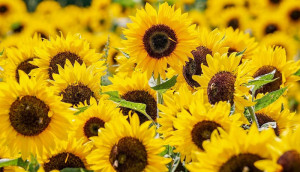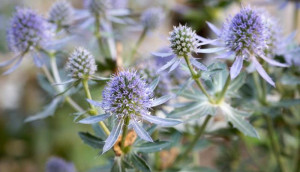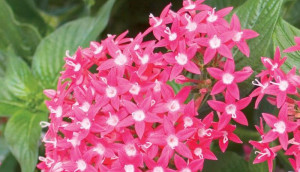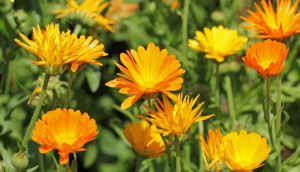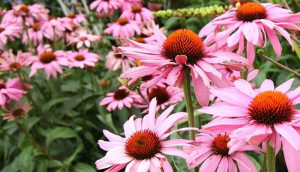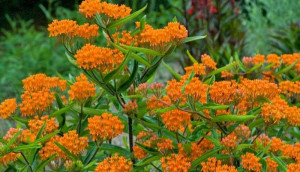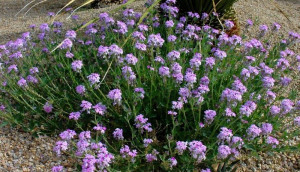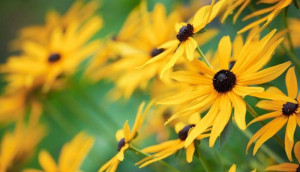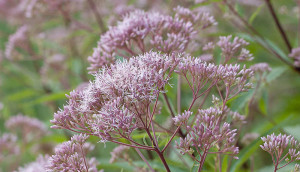build a butterfly garden
Butterfly Garden
If you are interested in attracting butterflies to your garden, there are some things to keep in mind. Butterflies need several things to be enticed to stay in an area. Like other animals, they require food, shelter, water, and a place to raise their young.
Food: Most adult butterflies feed on nectar that they get from flowers. Having flowers that are rich in nectar will attract butterflies to your yard. Butterflies are attracted by a dense patch of plantings – after all, they fly overhead, and it is easier for them to see a big patch of colorful flowers, rather than scattered, isolated flowers. So plant your flowers in big groups. Butterflies are particularly attracted by yellow, orange, and purple.
Shelter: Butterflies need trees to roost in for the night, to seek shade in during the heat of the day, and to hang onto in case of a storm.
Water: Butterflies don’t typically drink plain water, but they are attracted by water with dissolved minerals and other nutrients in damp soil and sand, often along stream and river banks and near puddles. They land on damp surfaces and extend their proboscis to suck up the nutrient-laden water. So leave some puddles when you water your garden.
Places to raise young: Here is the real key to attracting butterflies to your yard. In addition to nectar plants, be sure to plant host plants. Host plants are the plants on which the butterflies lay their eggs and that the caterpillars then eat. Generally each butterfly species has one or a few specific host plants that it uses. For instance, queen and monarch butterflies will only lay eggs on milkweed plants and their caterpillars will only eat milkweed plants; cloudless sulphur and sleepy orange butterflies will only use senna plants; gulf fritillaries will only use passion vine. If you plant host plants the butterflies are very likely to find them, and they will STAY around, since they have their host plants available for egg laying.
Butterflies, like most insects, are most active when it is warm, so we don’t see very many during the cold months.
Step 1: Select a site for your Butterfly Garden
Provide Shelter
Give Them Sun
Step 2: Remember the Rocks
Invite Butterflies to Sunbathe
Step 3: Provide Water
Create a Butterfly Puddle
Step 4: Add Plants that Attract Butterflies
SEED PLANTING GUIDE
The ideal time to sow most wildflower seed is in either the spring or late fall, however, sowing in other seasons can be successful, especially in more temperate zones.
For spring planting, sow one month prior to date of last hard freeze. For a late fall planting, sow into fine soil after November 1. The seed will lie dormant through the winter and will germinate the following spring when the soil warms and the days are longer.
Seeds planted in the fall should be covered with a thin layer of mulch.
For the most even distribution of a mix of variable seed sizes, combine clean, dry sand with the seed at a ratio of 4:1 (sand to seed). Cover the seed only to a depth of ⅛ to ¼ inch or 2-3 times the seed diameter by lightly raking in with a hand rake for small areas. Avoid covering the seeds too deeply and using more than the recommended seeding rate.
When irigation is possible, soak the area once and maintain consistent moisture for 4 to 6 weeks to ensure the best germination. In dry climates or drought conditions, up to ½ inch of supplemental water each week may be required after germination. However, overwatering will encourage weed growth. After the plants become established, the supplemental water can be reduced.
A WORD ABOUT INSECTICIDES
Remember that butterflies and caterpillars are insects. Insecticides will kill butterflies and caterpillars. Avoid using insecticides in your garden.
Please note that many plant distributors spray their plants so they will look nice on display. Tell the nursery staff that you are buying plants for a butterfly garden and that you want to be sure the host plants haven’t been sprayed. Give your plants a good shower with the hose when you plant to rinse off any topical insecticide. Some insecticides are systemic, meaning they the poison is in the plant. It can take a long time for this kind of insecticide to work its way out of the plant.
Some plants and flowers that attract butterflies
1. Sunflower (Helianthus annuus)
2. Sedum (Crassulaceae)
3. Sea Holly (Eryngium)
4. Penta (Pentas lanceolata)
5. Lavender (Lavandula)
6. Marigold (Tagetes)
7. Pink Fairy Duster (Calliandra eriophylla)
8. Coneflower (Echinacea)
9. Butterfly Weed (Asclepias tuberosa)
10. Verbena (Verbenaceae)
11. Black-Eyed Susan (Rudbeckia hirta)
12. Joe-Pye Weed (Eutrochium purpureum)
Resources
Visit Tucson’s butterfly Garden:
Learn more about Butterflies:
Get free Native seeds to plant:
Buy a Butterfly Garden kit locally:

